- PRÉSENTATION DE L'EPhEP
- L'École
- Les enseignements
- Un Cursus Général, un Cursus Spécialisé
- Le Cursus Général et ses modalités de contrôle
- Le Cursus Spécialisé
- Les Modules de formation Théorique (MTh)
- Le Module de formation Pratique (MP)
- Obligations de volume horaire
- Le Stage Seul
- Le Practicum Seul
- Modalités de contrôle des connaissances du Cursus Spécialisé
- Les enseignants
- Inscriptions
- Politique qualité de l'EPhEP
- Exposé des motifs
- Introduction au travail de l'année
- Livret des Enseignements
- Édito
- Bibliothèque Recherches
- Les dossiers de l'EPhEP
- Cours et conférences : extraits
- Conférences récentes
- Théorie / concepts
- Psychopathologie des névroses
- Psychopathologie des psychoses
- Psychopathologie de l'enfant
- Psychopathologie de l'adolescent
- Questions féminines
- Cognitivisme
- Neurosciences
- Psychothérapie institutionnelle
- Linguistique - signifiant - discours
- Philosophie
- Logique et topologie
- Anthropologie
- Histoire
- Lien social - institutions
- Droit
- Vidéothèque
- Vidéos récentes
- Théorie / concepts
- Psychopathologie des névroses
- Psychopathologie des psychoses
- Psychopathologie de l'enfant
- Psychopathologie de l'adolescent
- Questions féminines
- Cognitivisme
- Neurosciences
- Psychothérapie institutionnelle
- systemie
- Linguistique - signifiant - discours
- Langue - lalangue - la lettre - littérature - arts
- Philosophie
- Anthropologie
- Logique - topologie
- Histoire
- Lien social - Institutions
- Droit
- Parutions
- Dialogues
Agenda
Journées
Actualités
ALI-Bretagne et Collège de Psychiatrie Paris
04/05/2024 - 09:30
Parutions
Claude Landman, Stéphane Thibierge

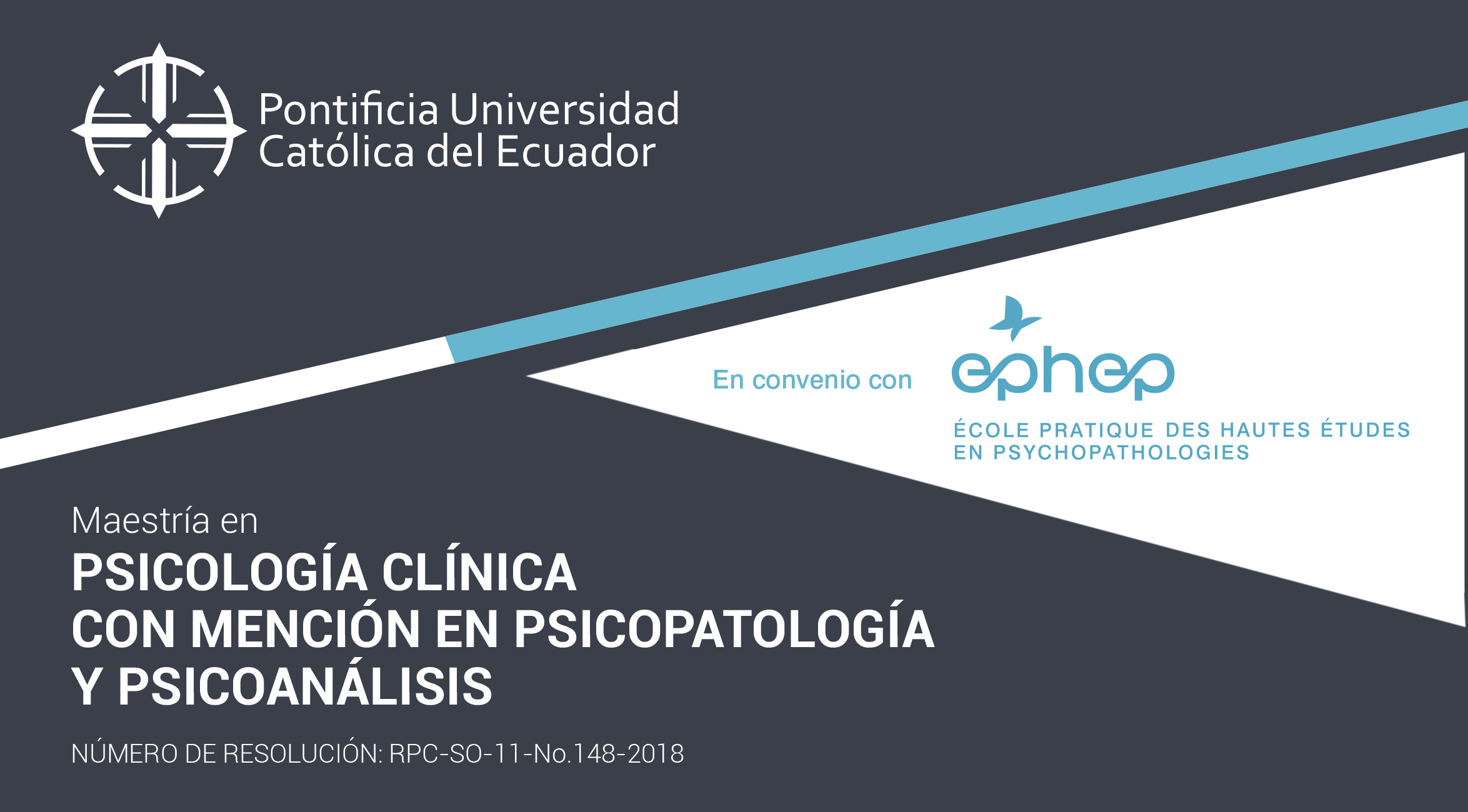
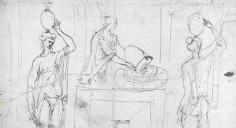

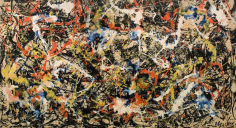
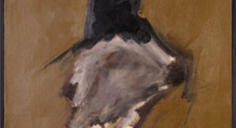
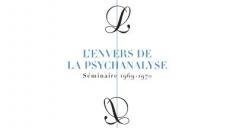

The theme I’ve chosen to evoke here demonstrates certain terminological changes in mental health. The term “melancholy” has disappeared from the vocabulary of illnesses, replaced now by “depression” or “bipolar disorders.” During the next few sessions, I’ll attempt to show you some of the difficulties we clinicians experience today regarding the signifiers that enable the transmission of psychopathology. This is a crucial point, and as students you should really get a sense of this evolution, in terms of casuistry, nosography, taxonomy. Words have changed tremendously, and in so doing, they’ve lost much of their flavor. For instance, since the term “depression” is now used to refer to extremely varied states, frankly, the word has lost its meaning – and its pertinence.
I’ve selected two strands that are, as is often the case, knotted with a third. First, there’s the strand I will refer to as that of classical clinical psychiatry. When Danièle Brillaud discussed hypochondria for you, understanding that term requires having read a bit of classical clinical psychiatry; otherwise, the word itself simply doesn’t mean anything. The second thread, characteristic of our school, is that of clinical psychoanalysis. As you’ve heard since the beginning of your schooling, the two fields that are psychiatry and psychoanalysis may often appear superimposed onto one another. But they don’t blend. As students, you need to be attentive to this phenomenon of juxtaposition, yet distinction. Finally, since Freud, we have a third thread in the field of psychopathology, inspired by psychoanalysis. These strands tie and touch in certain cases – but again, they do not blend. One can’t mistake one for the other, nor confuse one term with another. Psychiatry and psychoanalysis are different.
In this light, I will deploy the term “melancholy” and its very long history in the psychiatric tradition of the French aliénistes, and in Germany. As you know, what we call la clinique classique generally concerns itself with the foundational ground formed by Franco-German clinique. The main great authors referred to, those who’ve inspired all of psychiatry, are generally French or German. This doesn’t imply that there was no psychiatry elsewhere, of course. There are texts in Italian psychiatry, for example. But from the point of view of this tradition’s intellectual endowment, it is true that until a certain period – marked by the (recent) moment when the use of statistics in North America basically took over nosography (with the DSM) – until then, psychiatrists always referred to either French or German authors.
The term “melancholy” has a very long history in this tradition, reaching far into classical texts – with traces as far back as Hippocrates – and throughout art history, with Dürer, Goya, etc… Painting, in fact, has never stopped referring to melancholy. There are also traces of melancholy in medieval poetry, and of course in Romanticism. You also probably use the term “melancholy” to refer to various states. The word itself, melancholia, has been honored by both psychiatry and art (painters, poets, novelists etc…) I’ll develop the idea of melancholy in psychoanalysis more at length in the following sessions, but for now, I want to mention Freud’s seminal text Mourning and Melancholy. Freud treats melancholy without much regard for the clinical contribution of the aliénistes around him. At first, he doesn’t take note of the aliénistes’ accumulated lineaments; he ignores their contributions. As usual, Freud goes about melancholy in his own way. He asks, for instance: “As a clinician, how do you distinguish melancholy from mourning when you’re with a patient?” Everyone experiences mourning. Mourning is part of being alive. But Freud asks: “How do I, the analyst, differentiate this very essential and valuable part of human experience that is the work of mourning from the times when it goes awry and takes an entirely different turn by becoming something we call “melancholy”?
Interestingly, despite the pertinence of this question, Freud struggles to differentiate mourning and melancholy. Rushing towards the answer is of no importance. It’s the question itself that is incredible. Since Freud had a private practice (he never worked in hospitals), he never received very serious cases, like psychotic patients. When he came across grave illnesses, Freud turned to his colleagues in psychiatry. Regarding schizophrenia, for instance, he questions Eugen Bleuler. And for melancholy, Freud turns toKarl Abraham. The same way you just listened to Danièle Brillaud presenting her patients, Freud turns to Abraham and asks him about his (hospital) patients. So Abraham “narrates” these cases to Freud, and offers him his opinion. As was the case at the time, a conversation (or a dispute) ensues, what we now refer to as the Freud/Abraham “controversy.” Freud respected the fact that Abraham knew these cases better then he, so the angle of this dispute wasn’t clinical. Freud and Abraham disagreed about the nosological status that ought to be given to mania versus melancholy.
You should note, even those of you who work in hospitals that, sadly, the era of controversies is over. It would be wonderful if there still existed true controversies among clinicians. Someone would present several case studies to their peers; opinions would be discussed. The peers would respond: “Well, we agree with you here, but on this other point, we don’t follow you because we see things differently, and we saw different things than you. What do you think?” This discussion would last months; other colleagues would be asked their opinions, and so on and so forth. That’s how psychiatric congresses would occur. They were always based on precise clinical cases. Nothing scientific can ever be established without a dispute. So for instance, if everyone agrees here tonight, what’s the point of discussing anything? Consensus is not the proper conclusion in the professions we occupy. We need controversy. I long for controversy, to be honest. And I don’t mean a “polemic,” like what is occurring in the field of autism, for instance. I mean some dignified controversy.
Now, a few thoughts about the term “mood disorder” (les troubles de l’humeur). We have to be very careful with this term because nowadays, it implies any mood that can be treated with antidepressants. But the term humeur has a very long history, as you know, especially in classical philosophy. We find the idea of “mood disorder” among the Latins and Greeks who think of it as a “passion.” If you remember, the etymology of this term is passio, meaning “suffering.” We forget this connection. We generally use the term “passion” to describe something we want; all of us want to experience “passionate love,” for instance. Sadly, this idea blurs the fact that passio means “pain/suffering.”
Initially, the Greeks conceived of melancholy as a “passion,” with this characteristic (which remained present in psychiatry for a long time) that the melancholy patient remained accessible to moral law (la loi morale), to what the aliénistes call “moral treatment” (le traitement moral). So, our first point of entry into the word melancholy is indeed through the Greeks, who think of severe depressive states as forms of “passions of the soul.” Framed this way, this “passion” remains accessible to a certain form of discourse, to a form of morale.
Second angle: illness and insanity/madness (la folie). We’re talking about Ancient Greece, here – so you should take note of how remarkable this angle is from the historical point of view: the same clinical state, the same term distinguished two separate zones: on the one hand, human passion, passion of the soul; on the other hand, insanity. You’ll find traces of this in Aristotle’s extraordinary text Nicomachean Ethics. Also, in Hippocrates, with his “Theory of Moods,” amplified further by Galien, whose work was so important in the history of medicine. This “theory of moods” will finally reach a temporary closing point during the eighteenth-century.
So this theory lasts from 100 years after BC to the 1700s, when a new epistemological era begins. The perennial strength of this idea is remarkable. Even if our contemporary judgment has decided that these Ancient definitions have so-called “imaginary” forms, it’s important to appreciate how long they did survive, and how pertinent they were. So, in the context of “mood theory,” the medical/Hippocratic definition of melancholy referred to the retention of what they called “black bile.” According to this theory, then, the inflammation of an organ determines the lesion of thought.
Galien’s thought was very complex. His model of the human body relied on and blended notions of equilibrium, rhythm, flow and symmetry (or alterations of symmetry) with the notion of an ideal middle ground, a kind of “norm,” if you will; and this notion still exists in many cultures today. In a way, one could even say that for Galien, health is the absence of temperament, meaning that the predominance of one mood (humeur) was to be avoided at all costs. This premise isn’t entirely unknown; it’s very similar to certain strands of Oriental thinking.
Mood theory lasted from the Ancients to, basically, the eighteenth-century, with one parenthetical period, during the Middle Ages when the idea of melancholy was attached to acedia – meaning listlessness, idleness. This is a crucial point because it shows that melancholy was considered a mortal sin. “It is the devil who injects the melancholy that makes Man lukewarm and incredulous” (“Le diable insuffle la mélancolie qui rend l’homme tiède et incrédule”).
The link between melancholy and Saturn is well represented in painting. This is a major aspect, and brings to light an incredible intuition, that melancholy is somehow related to time, that the passage of time (Chronos) is irrevocably sutured to the origin of melancholy (la dimension originelle de la mélancolie). Here, a quick reminder: Homer presents the god Chronos in the Iliad as the father of the world’s three masters, Zeus, Posseidon and Hades, and therefore the father as a great creature with a tortuous design. On the one hand, Chronos is a benevolent God, the God of agriculture; on the other hand, Saturn/Chronos is the God who devours his children, who absorbs everything, including the other gods. This is why I mentioned Karl Abraham earlier; because in psychoanalytic literature, you will encounter the theme of orality, the big mouth that swallows – and its root is indeed Saturn/Chronos.
Chronos both swallows his own children and castrates his father Uranus, thereby turning the procreator of all things into a sterile creature. This explains why so many articles in phenomenology treat “the freezing of time” (le gel du temps). German authors were incredible in that domain. The common thread is clear, then: if a God makes sure that what follows is swallowed, and what proceeded is castrated, then evidently time has frozen. It’s an arresting act, in the purest sense of the word: an act that arrests everything (un acte d’arrêt).
Two references now:
Panofsky: Sur l’encre noire (Saturne)
Klibansky, Panofsky, Saxl: Saturne et la Mélancolie
In Saturne et la Mélancolie, the authors explain why and how the Greek God Chronos became assimilated to Saturn. They also explore how this association became disseminated in culture – Saturn being the Roman God of fields and harvests (remember that in French, we use the adjective “saturnine” (saturnien) to describe the melancholy person in a romantic way.) The association of Saturn the God to Saturn the star results in an intensification of negative traits. I’ll read it to you in Latin so you may hear the beauty of it all: “Natura frigida et sica sed accidenaliter humida” = “Nature cold and dry but accidentally humid” (“Nature froide et sèche mais accidentellement humide”). Why “accidentally humid”? Because the fields were humid, in theory at least. But here, we find dryness, and coldness. Beautiful, isn’t it? Beneath the psychopathology of it all, you must hear behind the description (almost pictorial indeed) the clout of the melancholy patient’s clinical picture.
The Greeks and Romans had their own clinical conception of what it means to be human. In their view, humans couldn’t be disassociated from the cosmos. This is a great problem, one that many thinkers pondered. But monotheism detached the subject’s vision from the cosmos. No one thinks about their place in the world in terms of cosmogony, something that was in fact perfectly natural for the Ancients. There was no such thing as an individual subject outside of a cosmological order. So what we now call “astrologers,” who were also mathematicians and astronomers, continued to develop and enrich associations and analogies; they interpreted mythical traits as types of characters, as types of human destinies.
So we can now synthesize the elements that come from this long history – but do keep in mind that you actually know these elements already; this history is lodged within you, you’ve never forgotten it. It’s the reason you go to museums or read poetry or novels. Because these elements speak to you; they seem familiar.
What are the determining elements that ran from the Middle Ages to the Renaissance?
Behind these terms, we surmise the psychiatric expressions used currently, like “affective anesthesia” (anesthésie affective) to describe a person who appears “cold and dried up” to the point of feeling no pain, which is the cardinal sign of melancholy. All these terms have been present as far back as we can remember, and under a form that is both full of imagery and very structured.
Similarly, the darkening of the world (l’assombrissement du monde): black bile, the black sky and sun, black ink. And this extraordinary expression of the aliéniste Séglas about melancholy: “The problem of the melancholy person is that he’s lost mental vision” (“le problème du mélancolique, c’est qu’il a perdu la vision mentale”). Consider this: it’s springtime, the trees are in bloom and yet melancholy makes the person say: “these trees are black.” He sees the tree as dead, as dried up. How does one explain that in terms of psychopathology? It’s not that easy to understand. Evidently, this isn’t an optical problem, a problem of color perception. The representation of life is itself dead (la représentation de la vie accrochée au monde est morte). Séglas’s expression “the loss of mental vision” is truly extraordinary, because it expresses the way the gaze attaches itself around the signifiers of life. If your gaze is no longer attached to the signifiers of life, the tree is dead to you, no matter how green the tree may be.
Similarly, you’ll hear the melancholy patient accusing himself of being a monster. These forms of “self-accusations” (l’auto-accusation) are in fact a form of megalomania. This idea is present in the following magnificent verses from German medieval poetry:
“Of all the planets, Saturn is the highest, the biggest and the most undignified. Cold and dry, she is the slowest in her course. Saturn’s hour is the hour of evil. At that hour, God was betrayed and handed over to death.”
“Des planètes, Saturne est la plus haute, la plus grande et la plus indigne. Froide et sèche, elle est la plus lente dans son cours. L’heure de Saturne est l’heure du mal. A cette heure là, Dieu fut trahi et livré à la mort.”
This linguistic soil (ce terreau linguistique) from what I call the “classical imagination” of melancholy, reappears later within the rich clinical descriptions of the German phenomenological school and with the French aliénistes. For now, however, I just wanted to begin this seminar by underscoring that a certain conceptual reality, namely the history of psychopathology, doesn’t spring out of nowhere and into the heads of people working in hospitals. This conceptual reality is in fact embedded in the very history of thought and ideas, of mores, of representations and culture.
Finally, I’d like to make a quick digression about a few words and concepts, circularity, periodicity, moral pain…
When I was a medical student at Sainte-Anne, the main psychiatric institution in Paris, and working with Marcel Czermak (the greatest clinician of psychoses in Paris, so if you’re lucky enough to hear him speak, do pay close attention), we’d sometimes come across manic-depressive patients who had this “circular” rhythm: a manic fit once in a while, followed by a melancholy episode several years later. How was this possible? How can one even conceive of an illness that “rolls” in such a manner (une maladie qui roule)? To what does it correspond, in terms of psychopathology? Most of the illnesses I encountered (paranoia, schizophrenia, etc..) were continuous, with moments of sedation. But no other ailment had the specific temporality one encounters with melancholy. What are we dealing with exactly? How can we conceptualize and explain an illness with a circular course (avec un parcours cerclé)? I asked myself these questions thirty years ago, and I have yet to answer them. The problem isn’t our lack of various and equally intelligent answers. The problem is that, despite it all, the mystery of melancholy remains entirely intact.
There are other concepts, of course. For instance, there’s the concept of “moral pain” (la douleur morale), which we owe to the German thinker Gressinger and with which you are all undoubtedly familiar. It’s worth mentioning also the idea of “self-guilt”(l’auto-culpabilité). This term refers to the patient’s particular way of declaring that he or she is a monster, of describing him/herself as a repulsive objet (un objet répugnant), an object that needs to disappear from circulation, from the field of representation. And finally, we find a few vertiginous themes of great interest for the Classics, like “immortality.” After a period of anxious melancholy, the patient declares him or herself “immortal.” As a consequence of this pain of living (une telle douleur d’exister), the patient asks the doctor for his/her death. The patients begs to die.
So, to summarize and to conclude this introductory session, here is an outline of what this seminar will focus on:
1) The “imaginary of melancholy.” It’s crucial that by “imaginary,” you grasp that I mean the highest possible level of cultural reference regarding melancholy. There’s no criticism here.
2) The symbolic dimension of melancholy, meaning the way psychopathological discourse spoke about melancholy during the period of the French aliénistes, those who named the clinical facts (les faits cliniques.)
We’ll discuss four main themes:
A) “Passion,” with the founders of modern psychiatry in the nineteenth-century, Pineland Esquirol(Pinel’s student).
B) “Circularity,” and the debate that involved Falret and Baillairget, two important authors who engaged in a kid of scientific race (similar to the Nobel Prize today) over “circular folly” (la folie circulaire.) Their reports constitute the first writings in psychopathology on the idea of circularity in manic-depression. A bit later, the great German author Emil Kraeplin coins the term “manic-depressive psychosis” in his sixth treatise. With this term, Kraeplin determines the place of manic-depression among mental illnesses in a very lasting manner.
C) The concept of “moral pain.”
D) The question of “delirium,” meaning whether or not we should consider what the melancholy patient narrates as a “delirium.” For instance, are these self-accusations in fact “delirious”? Here, we’ll discuss very important authors like Séglas and Cotard, who coin the beautiful and remarkable term “delirium of negations” (le délire des negations) that includes both types of delirium, enormity and immortality.
I should say that over the course of 30 years, I’ve only encountered two patients with the “Cotard Syndrome” or “Cotard Delusion” (Syndrome de Cotard), which was in and of itself very lucky. Imagine what this represents: a female patient says “my body is widespread to the limits of the universe itself” (mon corps est répandu aux limites de l’univers lui-même), adding also that she is immortal. You can imagine how difficult it is to have a dialogue with such a patient. And this is not a case of histrionics. There’s nothing hysterical about this patient. Here, we’re dealing with an entirely different Real (un autre Réel.) As a clinician, you’re not entering here into some kind of enchanted garden. Suddenly, after such an utterance, you become very anxious in the face of such a patient. Because she means exactly what she says: body and time are both infinitely widespread for her (répandus à l‘infini.) Sadly, these patients ask for death. They want a limit, a limit to their body, and a limit to the time of their existence.
So, all of this raises a few questions:
- Can one say that melancholy is a clinique of the passions, or of affect, or delirium?
- Why would it be so different than, for instance, hypochondriac delirium…?
- Is it a clinique of temporality?
- Finally, with Freud, is it a clinique of object relations (clinique de l’objet) ?
Indeed, Freud takes on the problem of melancholy in an entirely different way. For him, melancholy is a problem between the love object (l’objet d’amour) and the lost object (l’objet perdu). The patient cannot deal with the loss of an object, with the object of identification followed by its loss, with losing the object of identification.
So, you can now see how we end up with many possible lines of inquiry for one single term. And we’ve yet to get into the serious debates among the aliénistes themselves. The multifarious methodological propositions we’re dealing with go back to the classical era, as you see. The way we think through a specific problem always has a historical lineage. For melancholy, am I dealing with a “passion,” with a “delirium” (meaning an imaginary production), or with a strange distortion of time?
None of these propositions satisfied Freud. This doesn’t imply that classical authors were “wrong.” It means simply that Freud took a different venue. Freud worked on the notion of object relation and identification. He “imports” his own method into the clinical field.
As I mentioned earlier, there is a traditional field of psychopathology, a robust one, and there’s another one, the field of Freudian psychopathology. They cross each other but they are distinct. You need to accept this fundamental difficulty; it cannot disappear. The very terms of “melancholy,” “mania” or “manic-depressive psychosis” cannot be entirely reduced to Freud’s scheme. As students, you must accept this and hold on to various threads of thought without always seeking to confuse things.